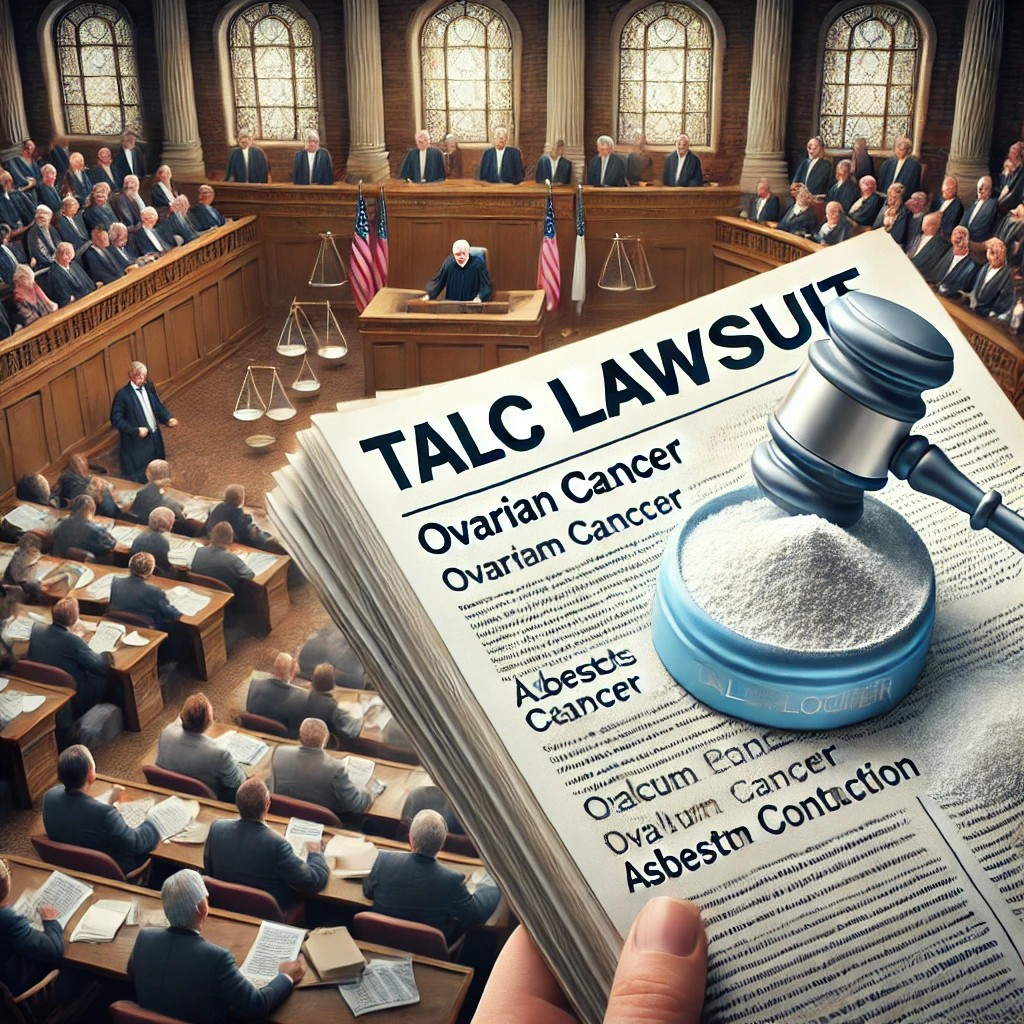For decades, Johnson & Johnson’s Baby Powder was a household staple, trusted by millions of families across the United States. However, recent developments have shattered that trust, as mounting evidence links the talcum powder products used in the powder to ovarian cancer and mesothelioma patients. This has led to an avalanche of both talcum and baby talcum powder mdl and ovarian cancer, case and lawsuits and baby talcum baby powder ovarian cancer case and lawsuits against Johnson & Johnson, with thousands of individuals seeking justice for the harm they allege was caused by this once-beloved product. The core of these legal cases revolves around whether the company knowingly allowed a dangerous product to be sold to consumers, and if so, what legal recourse is available to those affected.
At Mass Tort America law firm, we understand the gravity of this situation. Navigating the complexities of bankruptcy filing a talcum powder lawsuit can be overwhelming, especially for individuals already dealing with serious health issues. Our team is dedicated to providing the guidance and support needed to pursue these claims effectively. We work tirelessly to ensure our clients understand their rights and the legal options available to them, and we are committed to holding talcum powder lawsuits and large corporations accountable for their actions.
Understanding The Risks Of Talc In Baby Powder Products
For years, consumers trusted talc-based baby talcum powder and products without questioning their safety. However, growing concerns have emerged about the potential cancer risks now associated with these products, particularly those containing talcum in baby talcum and talc powder by itself. Talc, a naturally occurring mineral, is often found near asbestos in the earth, raising the possibility of contamination. Asbestos contamination is a well-known carcinogen, and its presence in talcum and baby talcum powder and products poses significant health risks, including the development of ovarian cancer and mesothelioma.
The link between talc use and ovarian cancer has been the subject of numerous studies and legal battles. Some research suggests that long-term use of talc-based products in the genital area may increase the risk of ovarian cancer in women. Additionally, individuals exposed to asbestos-contaminated talc may be at increased risk for mesothelioma, a rare but aggressive form of cancer that affects the lining of the lungs, abdomen, or heart. These findings have led to widespread concern and scrutiny of talc-based products, particularly those marketed by Johnson & Johnson.
Consumers need to be aware of the potential dangers of talc-based products and the legal options available if they have been harmed. Understanding the risks associated with these products is crucial for making informed decisions about their use. Those who have suffered health issues related to talc exposure may be entitled to compensation through a legal claim, and seeking professional legal advice is an important step in protecting their rights.
The Science Behind Talc And Asbestos Contamination
Talc is a soft mineral that has been widely used in personal care products due to its ability to absorb moisture and reduce friction. However, its proximity to asbestos deposits during mining raises significant concerns about contamination. Asbestos fibers, if inhaled or ingested, can cause severe health issues, including cancer. The presence of asbestos in talc has been at the center of the talc litigation against Johnson & Johnson, with plaintiffs arguing that the company failed to ensure the purity of its products.
Laboratory tests and studies have revealed that some talc products contain trace amounts of asbestos, which can be harmful even at low levels of exposure. Asbestos fibers can become lodged in the body, leading to inflammation and, over time, the development of cancerous cells. The debate over whether talc itself, without asbestos contamination, can cause cancer remains unresolved, but the potential for asbestos contamination has heightened concerns about the safety of talc-based products.
Understanding the science behind talc and asbestos contamination is crucial for those considering legal action. Plaintiffs must demonstrate that the talc product they used was contaminated with asbestos and that this contamination led to their illness. This requires expert testimony and scientific evidence, making these cases particularly complex. Legal representation with experience in handling asbestos-related talc claims, is essential for navigating these challenges and building a strong case.
The Role Of FDA And Regulatory Oversight In Talc Products
The U.S. Food and Drug Administration (FDA) plays a critical role in regulating personal care products, including those containing talc powder. However, the regulatory framework surrounding these talc powder-based products has been criticized for being insufficiently stringent. Unlike pharmaceuticals, talc powder products in cosmetics are not subject to pre-market approval by the FDA, meaning that companies are responsible for ensuring the safety of their products. This regulatory gap has been a point of contention in several talc powder-related lawsuits, as plaintiffs argue that more rigorous oversight could have prevented their exposure to harmful substances.
Over the years, the FDA has conducted tests on talc-based products to detect asbestos contamination. While some tests have found no evidence of asbestos, others have identified traces of the carcinogen in certain talcum powder products. These findings have led to calls for stronger regulations and more comprehensive testing of talc-based products before they reach the market. The FDA has also issued warnings and recommendations to manufacturers about the potential risks of asbestos contamination, but critics argue that these measures have not gone far enough to protect consumers.
The role of the FDA and regulatory oversight is a crucial aspect of the legal battles surrounding talc powder-related cases. Plaintiffs in talcum powder lawsuits may argue that inadequate regulation allowed dangerous talc powder and products to be sold to the public, contributing to their illnesses. As the legal landscape of talc powder lawsuits continues to evolve, there may be increased pressure on regulators to tighten oversight and implement stricter safety standards for all talc powder-based products.
The History Of Litigation Against Johnson & Johnson
The legal battles against Johnson & Johnson over its talc-based products have a long history, with the first of j j’s talc lawsuits dating back to the 1980s. These early of j j’s talc cases were brought by individuals who claimed that the company’s talc based baby powder products caused their or developed ovarian cancer, or mesothelioma. Over the years, the number of lawsuits over j j’s talc has grown exponentially, with thousands of plaintiffs now involved in talc mass tort litigation against the company. The history of these cases reveals a pattern of allegations that Johnson & Johnson knew about the risks associated with talc-based products but failed to warn consumers.
One of the most significant milestones in this litigation occurred in 2018 when a Missouri jury awarded $4.7 billion in damages to 22 women who claimed that Johnson & Johnson’s talc products caused their ovarian cancer. This verdict was a turning point in the legal battle, as it highlighted the potential for substantial financial penalties for the company. While Johnson & Johnson has appealed many of these verdicts, arguing appeals court, that the science does not support the claims of ovarian cancer’ victims, the ongoing litigation has brought increased scrutiny to the company’s practices.
The history of talc litigation against Johnson & Johnson underscores the importance of legal accountability for corporations. As more evidence comes to light and more cases go to trial, the legal landscape for talc-related claims continues to evolve. Plaintiffs must be prepared to navigate the complexities of these cases, which require a deep understanding of both the law and the scientific issues involved.
Impact Of Court Decisions On Future Talc Litigation
Court decisions in talc-related cases have had a profound impact on the direction of future talc litigation. Significant verdicts against Johnson & Johnson have not only resulted in substantial financial awards for plaintiffs but have also influenced the strategies of both plaintiffs’ attorneys and defense teams. These decisions have set legal precedents that could shape the outcome of future talc cases too, particularly in how courts handle scientific evidence and expert testimony.
One key aspect of these court decisions has been the handling of expert testimony. In many cases, the admissibility of scientific evidence has been a critical factor in the outcome of lawsuits claiming the talcum powder trial. Courts have grappled with the question of whether the science linking talcum powder to ovarian cancer is sufficiently reliable to be presented to a jury. Some courts have allowed this evidence, leading to significant verdicts for plaintiffs, while others have excluded it, resulting in dismissals pending cases. These differing rulings have created a patchwork of legal standards across the country, making it challenging to predict the outcome of future cases.
The impact of these supreme court of decisions extends beyond individual cases, as they influence broader legal strategies and the willingness of companies to settle pending talc claims and cases. Johnson & Johnson has faced mounting pressure to settle cases rather than risk potentially damaging verdicts in court. These settlements, while often confidential, can provide plaintiffs with compensation while allowing the company to avoid the uncertainty of a trial. As litigation continues, the outcomes of these pending cases, will likely shape the future of talc-related claims and the legal strategies employed by both sides.
Challenges In Proving Causation In Talc-Related Cases
Proving causation is one of the most challenging aspects of talc-related litigation. To succeed in a product liability case, plaintiffs must demonstrate that their illness was directly caused by the use of a specific product. In the context of talc-related cases, this means proving that Johnson & Johnson’s Baby Powder was contaminated with asbestos and that this contamination led to the development of cancer. Given the complexity of cancer and the many potential causes, establishing this direct link can be difficult.
Scientific studies on the relationship between talcum powder and ovarian cancer have produced mixed results, complicating the task of proving causation in court. While some studies suggest a correlation between talc use and ovarian cancer, others have found no significant link. Additionally, mesothelioma is more commonly associated with asbestos exposure, but proving that the same asbestos exposure came specifically from talc products can be challenging. This scientific uncertainty has led to varied outcomes in court, with some cases resulting in substantial verdicts for plaintiffs and others being dismissed due to insufficient evidence.
The challenges of proving causation highlight the importance present value of expert testimony in talc-related cases. Plaintiffs often rely on the testimony of medical and scientific experts to establish the link between talc use and their illness. These experts may analyze tissue samples, review medical records, and provide opinions on the likelihood that talc exposure caused the cancer. The credibility and qualifications of these experts can be a decisive factor in the outcome of the case, making it crucial for talc plaintiffs to work with experienced legal teams who can effectively present this evidence in court.
The Role Of Mass Torts In Talc Litigation
Mass tort litigation has become a critical tool for individuals seeking justice in talc-related cases. Unlike class actions, where plaintiffs are grouped together in a single lawsuit, mass torts allow each plaintiff to file an individual claim while sharing certain aspects of the litigation process, such as discovery and expert testimony. This approach provides greater flexibility for plaintiffs, allowing them to pursue their claims based on their specific circumstances while benefiting from the collective resources of a larger group.
Mass torts have played a significant role in the litigation against Johnson & Johnson, with thousands of plaintiffs filing individual lawsuits across the country. These cases are often consolidated into multi-district litigation (MDL), where they are overseen by a single federal judge to streamline the process and ensure consistency in appeals court rulings. The use of mass torts has allowed plaintiffs to pool their resources, share information, and strengthen their own legal defense strategies, making it more feasible to take on a large corporation like Johnson & Johnson.
The success of law firm in mass torts in talc-related litigation has led to substantial settlements and verdicts for plaintiffs. However, the process can be lengthy and complex, requiring careful coordination among law firm, plaintiffs’ attorneys and plaintiffs experts and a law firm with deep understanding of both the legal and scientific issues involved. For individuals considering filing a talc bankruptcy-related claim, law firm participating in a mass tort can provide the support and resources needed to pursue their talc bankruptcy case effectively while still allowing for individual attention to their specific circumstances.
Comparing Mass Tort And Class Action In Talc Cases
When pursuing legal action against a large corporation like Johnson & Johnson, individuals may wonder whether to join a mass tort or a a class action lawsuit. Both approaches offer ways for multiple plaintiffs to seek justice, but they differ significantly in how they handle individual claims. Understanding the differences between mass torts and class actions is crucial for plaintiffs considering their legal options in talc-related cases.
In a class action, all plaintiffs are treated as a single group, and any settlement or verdict is divided among them. This approach is efficient and can be effective when the damages suffered by each plaintiff are relatively uniform. However, in talc-related cases, the severity and nature of each plaintiff’s injuries can vary significantly, making a class action less suitable. Additionally, individual talc claimants and plaintiffs in a class action may have less control over the litigation process and the terms of any settlement.
By contrast jersey bankruptcy court, a mass tort allows each plaintiff to file an individual claim in bankruptcy court while benefiting from shared resources and coordination among attorneys and law firms. This approach is often more appropriate in cases like talc-related litigation, where the circumstances of each plaintiff’s case are unique. In a mass tort, plaintiffs have more control over their claims and can pursue compensation that reflects their specific injuries and damages. For those affected by Johnson & Johnson’s Baby Powder lawsuit, participating in bankruptcy filing or a mass tort may offer a more personalized and effective path to justice.
The Future Of Talc Litigation And Corporate Accountability
As talc-related litigation continues to evolve, the future of these cases and their impact on corporate accountability remains uncertain. The legal battles against Johnson & Johnson have already led to significant changes in how the company operates, including the decision earlier this month to discontinue the sale of talc-based Baby Powder in North America. However, the broader implications of these cases for corporate accountability in the personal care industry are still unfolding.
One potential outcome of the ongoing litigation is increased regulation and oversight of personal care products, particularly those containing talc. The scrutiny of Johnson & Johnson’s practices has highlighted gaps in the current regulatory framework, prompting calls for stronger safety standards and more rigorous testing. If these changes are implemented, they could have far-reaching effects on the industry, potentially preventing similar issues from arising in the future.
The future of talc liability litigation also depends on the willingness of courts to hold corporations accountable for the safety of their products. The mixed outcomes of recent talc liabilities cases suggest that the legal landscape for talc liabilities is still in flux, with ongoing debates over the admissibility of scientific evidence and the standards for proving causation. As these cases continue to be litigated, the outcomes will likely shape the future of product liability law and the responsibilities of corporations to ensure the safety of their products.
Understanding The Legal Basis For Talc-Related Claims
The primary legal claim in talc-related cases against Johnson & Johnson is product liability. This area of law holds manufacturers responsible for releasing products that are dangerous when used as intended. In the case of Johnson & Johnson’s Baby Powder, plaintiffs argue that the company failed to warn consumers about the risks associated with long-term talc use, particularly the risk of ovarian cancer and mesothelioma. This failure to warn forms the basis of many of the talc lawsuits currently making their way through the courts.
Another significant aspect of these cases is the allegation that Johnson & Johnson, johnson’s talcum powder, j j’s talc. was aware of the potential dangers of talc for decades but chose to conceal this information. Internal company documents, which have been made public through various lawsuits, suggest that Johnson & Johnson, johnson proposed, j’s worldwide vice president j’s talc knew about the presence of asbestos—a known carcinogen—in some of their talc products as early as the 1970s. Despite this, they continued to market the product as safe for everyday use, leading johnson proposed j j’s. to accusations of gross negligence and fraudulent misrepresentation.
These cases are further complicated by the scientific debate surrounding talc and its potential health risks. While some studies have shown a correlation between talc use and cancer, others have not. This has led to challenges in proving causation, a key element in any product liability case. However, the sheer number of cases and the consistency of the allegations have led to significant legal scrutiny of Johnson & Johnson’s practices earlier this month.
The Process Of Filing A Talc-Related Lawsuit
Filing a talc-related lawsuit involves several steps, each requiring careful preparation and legal expertise. The first step is to gather evidence that links the use of Johnson & Johnson’s Baby Powder to the plaintiff’s medical condition. This includes medical records, product receipts, and witness testimony. Additionally, expert witnesses, such as oncologists and toxicologists, may be called upon to provide testimony regarding the connection between talc use and ovarian cancer.
Once the evidence is gathered, the next step is to file a complaint with the appropriate bankruptcy court for bankruptcy protection. This legal document outlines the plaintiff’s claims against talc supplier Johnson & Johnson and specifies the damages being sought in bankruptcy court. In talc-related cases, damages in bankruptcy court may include compensation for medical expenses, lost wages, pain and suffering, and punitive damages, which are intended to punish the company for its alleged wrongdoing.
After the complaint is filed with federal judge, the case enters the discovery phase, where both sides exchange information and gather additional evidence. This phase can be lengthy and complex, as it often involves the review of thousands of documents, depositions of witnesses, and the formulation of legal arguments. Given the complexity of these cases, it is crucial for plaintiffs to have skilled legal representation to navigate this process and build a strong case.
Recent Developments And Court Rulings
The legal landscape surrounding talc-related cases is constantly evolving, with new court rulings and settlements shaping the direction of ongoing litigation. One of the most significant developments occurred in 2020 when Johnson & Johnson announced it would discontinue the sale of talc-based Baby Powder in North America. This decision was widely seen as a response to the growing number of talc and other other baby powder lawsuits, talcum and baby powder other lawsuits, talcum and baby talcum powder cancer lawsuits, lawsuits themselves, and the negative publicity surrounding the product. However, Johnson & Johnson has continued to deny any wrongdoing, maintaining that their talc products are safe and free of asbestos.
Court rulings in talcum and baby talcum powder, and trials have varied significantly across different jurisdictions. Some plaintiffs have been awarded substantial verdicts in talc talcum and baby powder lawsuits, including multi-million-dollar damages, while others have seen their cases dismissed due to insufficient evidence. In some instances, appellate courts have overturned large verdicts, citing issues with the admissibility of expert testimony or the scientific validity of the claims. These mixed outcomes highlight the uncertainty and complexity of talc talcum and baby powder- and-related litigation.
Despite these challenges to j j’s part, the momentum behind talc-related cases continues to grow. In June 2021, the U.S. Supreme Court declined to review a $2.1 billion verdict against Johnson & Johnson, effectively upholding the decision. This ruling has emboldened other talc plaintiffs, and may influence supreme court on the outcome of future talc lawsuits. As the litigation over talc trial progresses, it is likely that Johnson & Johnson will face increasing pressure to settle the remaining claims or risk further damaging verdicts.
How Mass Tort America Can Help With Your Talc Case
If you or someone you know has been affected by Johnson & Johnson’s Baby Powder, you may be entitled to pursue legal action. Mass Tort America has extensive experience in handling complex talc-related cases and is committed to helping clients navigate the legal system. We understand the challenges faced by those who have suffered from cancer or other illnesses related to talc exposure, and we are here to provide the support and guidance needed to seek justice.
At Mass Tort America, we offer personalized legal services tailored to the unique circumstances of each client. Our team will work closely with you to gather evidence, consult with experts, and build a strong case to pursue compensation for your injuries. We also offer a dedicated Concierge Team to assist with every aspect of your case, ensuring that you have the resources and support you need throughout the legal process. Contact us today at 800-356-4338 or visit our contact form at https://masstortamerica.com/contact/ to schedule a free consultation and learn more about your legal options.



















